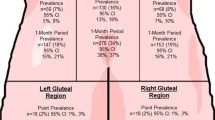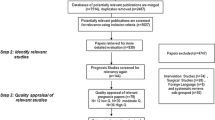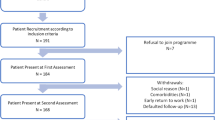Abstract
Review of the literature shows significant variation in the rates of recovery from an episode of low back pain (LBP). Two hundred and seven workers filing a “First Report of Injury” form with the Vermont Department of Labor and Industry were contacted 3 months post-injury to determine time until first return-to-work, work status, lost workdays, and factors such as pain intensity and satisfaction with health care. Overall, 69.4% of the workers had first returned to work within 1 week, 85.9% within 1 month, and 93.7% by 3 months. Three months post-injury, 8.7% of these workers were not working (disabled) due to their LBP. On a scale of 0–10, the disabled reported substantially more pain in the past few days (p=.0001) and a higher level of “worst pain since injury” (p=.004). Those disabled were less likely to feel they had received the right treatment for their LBP (p=.05). Researchers and clinicians need a clear understanding of recovery curves to assess the effectiveness of any interventions.
Similar content being viewed by others
References
Frymoyer JW, Cats-Baril WL. An overview of the incidences and costs of low back pain.Clin Orthop NA 1991; 22: 263–271.
Nachemson AL. Newest knowledge of low back pain, a critical look.Clin Orthop Rel Res 1992; 279: 8–20.
Waddell G. A new clinical model for the treatment of low back pain.Spine 1987; 12: 632–644.
McGrail MP, Tsai SP, Bernacki EJ. A comprehensive initiative to manage the incidence and cost of occupational injury and illness.JOEM 1995; 37: 1263–1268.
Hadler N. Backache and work incapacity in Japan.JOM 1994; 36: 1110–1114.
McNeil JM. Prevalence of disabilities and associated health conditions—United States, 1991–1992. MMWR 1994; 43: 730–739.
Roland M, Morris R. A study of the natural history of low back pain Part II: Development of guidelines for trials of treatment in primary care.Spine 1982; 8: 145–150.
Von Korff M. Studying the natural history of back pain.Spine 1994; 19: 2041S-2046S.
Quebec task force on spinal disorders.Spine 1987; 12: 7S.
Berquist-Ullman M, Larsson A. Acute low back pain in injury. A controlled prospective study with special reference to therapy and confounding factors.Acta Orthop Scan 1977; 170S.
Lehman TR, Spratt KF, Lehmann K. Predicting long-term disability in low back injured workers presenting to a spine consultant.Spine 1993; 18: 1103–1112.
Coste J, Delecoeuillerie G, Cohen de Lara A, LeParc JM, Paolaggi JB. Clinical course and prognostic factors in acute low back pain: an inception cohort study in primary care practice.BMJ 1994; 308: 577–580.
Carey TS, Garrett J, Jackman A,et al. The outcomes and costs of care for acute low back pain among patients seen by primary care practitioners, chiropractors, and orthopedic surgeons.NEJM 1995; 333: 913–917.
Greenough CG, Fraser RD. The effects of compensation on recovery from low back pain.Spine 1989; 14: 947–955.
Von Korff M, Barlow W, Cherkin D, Deyo R. Effects of practice style in managing back pain.Ann Int Med 1994; 121: 187–195.
Sanderson PL, Todd BD, Holt G, Getty CJ. Compensation, work status and disability in low back pain patients.Spine 1995; 20: 554–556.
Rossignol M, Lortie M, Ledoux E. Comparison of spinal health indicators in predicting spinal status in a 1-year longitudinal study.Spine 1993; 18: 54–60.
Webster BS, Snook S. The cost of 1989 workers’ compensation low back claims.Spine 1994; 19: 1111–1116.
Ripley B. Commissioner of Workers’ Compensation, State of Vermont, from a lecture given at the Annual Vermont Claims Seminar, October 1993.
Spitzer WO. Low back pain in the workplace: Attainable benefits not attained.Brit J Indust Med. 1993; 50: 385–388.
Hazard RG, Haugh LD, Reid S, Preble JB, MacDonald L. Early prediction of disability following occupational low back injury.Spine 1996; 21: 945–951.
Lee ET.Statistical methods for survival analysis. (2nd Ed.). New York: John Whitney and Sons, 1992.
SAS/STAT user’s guide, Version 6 (4th Ed.). Cary, NC: SAS Institute, 1990.
State of Vermont.Processes and procedure for claims under the Vermont workers’ compensation and occupational disease acts. Montpelier, VT: Department of Labor and Industry, 1993.
Carosella AM, Lackner JM, Feuerstein M. Factors associated with early discharge from a multidisciplinary work rehabilitation program for chronic low back pain.Pain 1994; 57: 69–76.
Fordyce W, McMahon R, Rainwater G,et al. Pain complaint-exercise performance relationship in chronic pain.Pain 1981; 10: 311–321.
Mayer TG, Gatchel RJ, Kishino N,et al. Objective assessment of spine function following industrial A prospective study with comparison group and one year follow up.Spine 1985; 10: 482–493.
Hazard RG, Fenwick JW, Kalisch SM,et al. Functional restoration with behavioral support: A one year prospective study of patients with chronic low back pain.Spine 1989; 14: 157–161.
Hazard RG, Bendix A, Fenwick JW. Disability exaggeration as a predictor of functional restoration outcomes for patients with chronic low back pain.Spine 1991; 16: 1062–1067.
Author information
Authors and Affiliations
Rights and permissions
About this article
Cite this article
Reid, S., Haugh, L.D., Hazard, R.G. et al. Occupational low back pain: Recovery curves and factors associated with disability. J Occup Rehab 7, 1–14 (1997). https://doi.org/10.1007/BF02765872
Issue Date:
DOI: https://doi.org/10.1007/BF02765872




